Technology
How X users earn thousands from US election misinformation and AI images
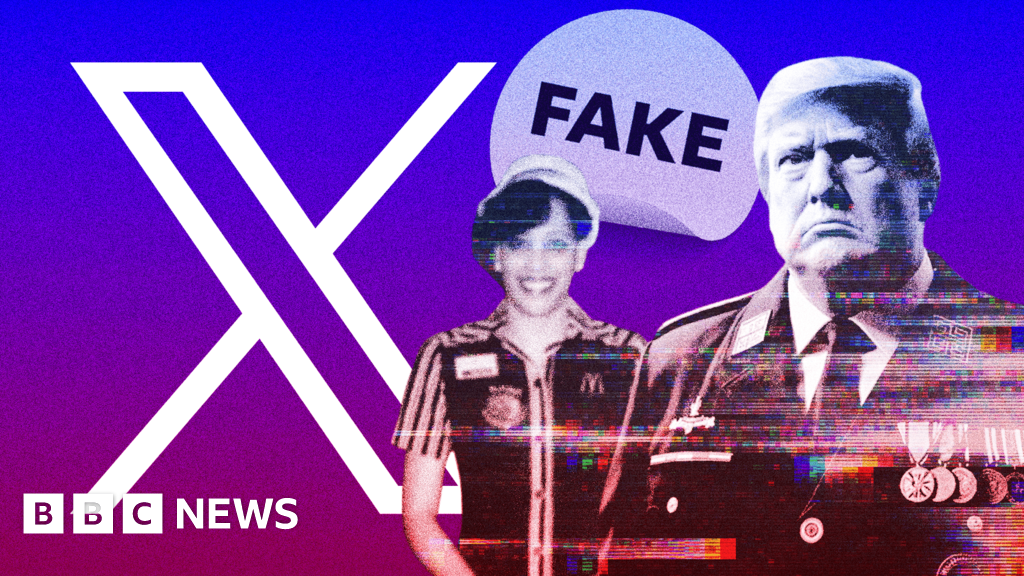
 BBC
BBCSome users on X who spend their days sharing content that includes election misinformation, AI-generated images and unfounded conspiracy theories say they are being paid “thousands of dollars” by the social media site.
The BBC identified networks of dozens of accounts that re-share each other’s content multiple times a day – including a mix of true, unfounded, false and faked material – to boost their reach, and therefore, revenue on the site.
Several say earnings from their own and other accounts range from a couple of hundred to thousands of dollars.
They also say they coordinate sharing each other’s posts on forums and group chats. “It’s a way of trying to help each other out,” one user said.
Some of these networks support Donald Trump, others Kamala Harris, and some are independent. Several of these profiles – which say they are not connected to official campaigns – have been contacted by US politicians, including congressional candidates, looking for supportive posts.
On 9 October, X changed its rules so the payments made to eligible accounts with a significant reach are calculated according to the amount of engagement from premium users – likes, shares and comments – rather than the number of ads under their posts.
Many social media sites allow users to make money from their posts or to share sponsored content. But they often have rules which allow them to de-monetise or suspend profiles that post misinformation. X does not have guidelines on misinformation in the same way.
While X has a smaller user base than some sites, it has a significant impact on political discourse. It raises questions about whether X is incentivising users to post provocative claims, whether they’re true or not, at a highly sensitive moment for US politics.
The BBC compared the approximate earnings reported by some of these X users with the amount they would be expected to earn, based on their number of views, followers and interactions with other profiles, and found them to be credible.
Among the misleading posts shared by some of these networks of profiles were claims about election fraud which had been rebutted by authorities, and extreme, unfounded allegations of paedophilia and sexual abuse against the presidential and vice-presidential candidates.
Some misleading and false posts that originated on X have also spilled on to other social media sites with a bigger audience, such as Facebook and TikTok.
In one example, an X user with a small following says he created a doctored image purporting to show Kamala Harris working at McDonald’s as a young woman. Other users then pushed evidence-free claims that the Democratic Party was manipulating images of its candidate.
Unfounded conspiracy theories from X about the July assassination attempt on Donald Trump were also picked up on other social media sites.
X did not respond to questions about whether the site is incentivising users to post like this, nor to requests to interview owner Elon Musk.
‘It’s become a lot easier to make money’
Freedom Uncut’s content creation lair – where he streams and makes videos – is decorated with fairy lights in the shape of an American flag. He says he is an independent, but would rather Donald Trump becomes president than Kamala Harris.
Free – as his friends call him – says he can spend up to 16 hours a day in his lair posting on X, interacting with the network of dozens of content creators he’s a part of, and sharing AI-generated pictures. He does not share his full name or real identity because he says his family’s personal information has been exposed online, leading to threats.
He is by no means one of the most extreme posters, and has agreed to meet me and explain how these networks on X operate.
He says he has had 11 million views over the past few months since he began posting regularly about the US election. He brings several up on the screen as we chat at his home in Tampa, Florida.

Some are obviously satire – Donald Trump looking like a character in The Matrix as he brushes aside bullets, or President Joe Biden as a dictator. Other AI images are less fantastical – including an image of someone on the roof of their flooded home as fighter jets pass by, with the comment: “Remember that politicians don’t care about you on November 5th.”
The image echoes Mr Trump’s claim that there were “no helicopters, no rescue” for people in North Carolina following Hurricane Helene. The claim has been rebutted by the North Carolina National Guard, which says it rescued hundreds of people in 146 flight missions.
Freedom Uncut says he sees his images as “art” that sparks a conversation. He says he is “not trying to fool anybody” but that he can “do so much more by using AI”.
Since his profile was monetised, he says he can make in the “low thousands” monthly from X: “I think it’s become a lot easier for people to make money.”
He adds that some users he knows have been making more than five figures and claims he could corroborate this by seeing the reach of their posts: “It’s at that point it really does become a job.”
He says it is the “controversial” stuff that tends to get the most views – and compares this to “sensationalist” traditional media.

While he posts “provocative stuff”, he says it is “usually based in some version of reality”. But he suggests that other profiles he sees are happy to share posts they know not to be true. This, he says, is an easy “money-maker”.
Freedom Uncut dismisses concerns about false claims influencing the election, claiming the government “spreads more misinformation than the rest of the internet combined”.
He also says it is “very common” for local politicians to reach out to accounts like his on X for support. He says some of them have chatted to him about appearing on his live streams and spoken to him about creating and sharing memes, AI images and artwork for them.
Could any of these posts – misleading or not – have a tangible impact this election?
“I think that you’re seeing that currently. I think that a lot of the Trump support comes from that,” he says.
In Freedom Uncut’s view, there is “more trust in independent media” – including accounts sharing AI-generated images and misinformation – than in “some traditional media companies”.
‘No way to get to the truth’
Going head-to-head with the pro-Trump accounts Freedom Uncut describes are profiles such as Brown Eyed Susan, who has more than 200,000 followers on X.
She is part of a network of “die-hard” accounts posting content multiple times every hour in support of Democratic candidate Kamala Harris. While she uses her first name, she does not share her surname because of threats and abuse she has received online.
Speaking to me from Los Angeles, Susan says she never intended to start making money from her posts – or for her account’s reach to “explode”. Sometimes she posts and re-shares more than 100 messages a day – and her individual posts sometimes reach more than two million users each.
She says she only makes money from her posts because she was awarded a blue tick, which marks paid users on the site and some prominent accounts. “I didn’t ask for it. I can’t hide it, and I can’t return it. So I clicked on monetise,” she tells me, estimating she can make a couple of hundred dollars a month.

Aside from posting about policy, some of her most viral posts – racking up more than three million views – have promoted unfounded and false conspiracy theories suggesting the July assassination attempt was staged by Donald Trump.
She acknowledges that a member of the crowd and the shooter were killed, but says she has genuine questions about Donald Trump’s injury, the security failings, and whether the incident has been properly investigated.
“There’s no way to get to the truth in this. And if they want to call it conspiratorial, they can,” she says.
Susan also shares memes, some of which use AI, taking aim at the Republican contender. Several more convincing examples make him look older or unwell. She says these “illustrate his current condition”.
Others show him looking like a dictator. She maintains that all her images are “obvious” fakes.
Like Freedom Uncut, she says politicians, including congressional candidates, have contacted her for support, and she says she tries to “spread as much awareness” as she can for them.
‘They want it to be real’
Following a row over whether Kamala Harris once worked at McDonald’s, a doctored image of her in the fast food chain’s uniform was shared on Facebook by her supporters and went viral.
When some pro-Trump accounts realised it was an edited photo of a different woman in the uniform, it triggered unfounded accusations that the image came from the Democratic Party itself.
An account called “The Infinite Dude” on X appeared to be the first to share the image with the caption: “This is fake”. The person behind the image tells me his name is Blake and that he shared it as part of an experiment. His profile does not have nearly as many followers as the other accounts I have been talking to.
When I ask for evidence that he doctored the image, he told me he has “the original files and creation timestamps”, but he did not share those with me as he says proof does not really matter.
“People share content not because it’s real, but because they want it to be real. Both sides do it equally – they just choose different stories to believe,” he says.
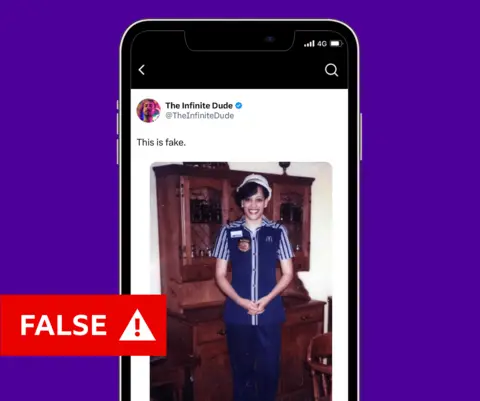
His political allegiance remains unclear and he says this “isn’t about politics”.
X says online that its priority is to protect and defend the user’s voice. The site adds manipulated media labels to some AI-generated and doctored video, audio and images. It also has a feature called Community Notes, which crowdsources fact-checking from users.
During the UK election, X did take action over a network of accounts sharing faked clips that I investigated. In the US election campaign, however, I have received no response to my questions or requests to interview Elon Musk.
That matters – because social media companies like his could affect what unfolds as voters head to the polls.
Marianna Spring investigated this story using her Undercover Voters – five fictional characters based on data from the Pew Research Centre – that allow her to interrogate what some different users are recommended on social media. Their social media accounts are private and do not message real people.
Find out more about them here – and on the BBC Americast podcast on BBC Sounds.
Technology
Horizon Zero Dawn Remastered looks incredible. Does it matter?
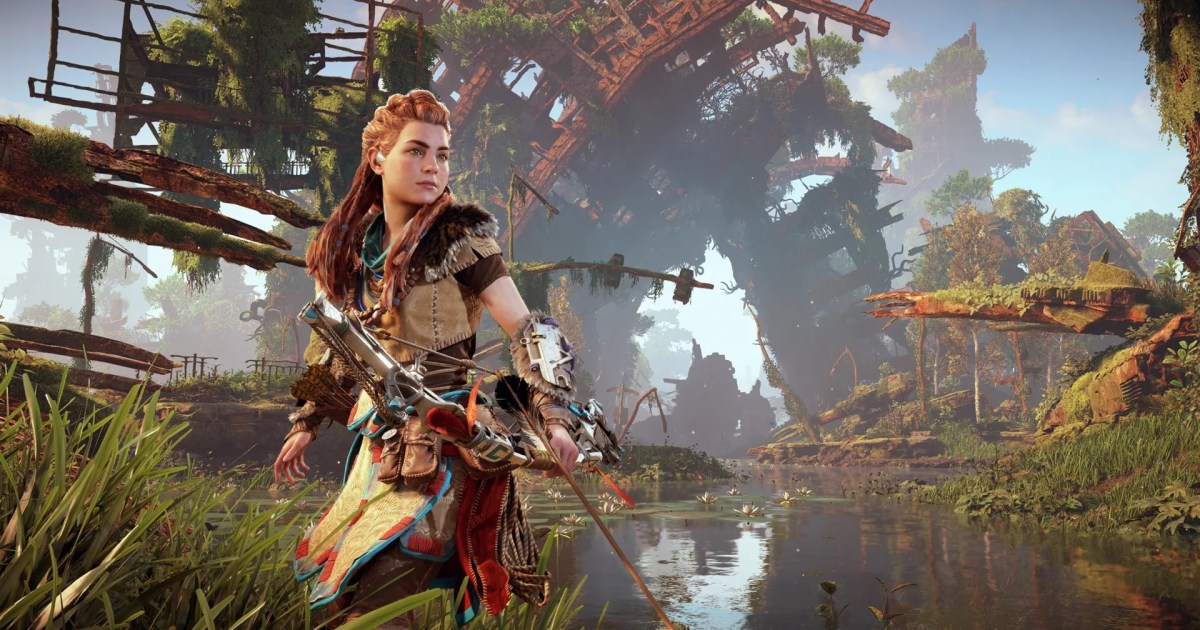
If you need proof that the video game industry’s current rerelease craze has started to lose the plot, look no further than Horizon Zero Dawn Remastered.
Like Sonic Generations of Paper Mario: The Thousand-Year Door, Sony’s latest gives its debut Horizon game a major visual upgrade that’s far more polished compared to its predecessor. Unlike those games, though, Horizon Zero Dawn isn’t a release from two or three generations ago; it only launched in 2017. Seven years may sound like a lifetime for younger players, but it’s barely any time at all as far as console generations go. If Sony was going to convince players to double-dip, it would need to deliver one heck of a remaster.
I’ll give credit where it’s due: Guerilla Games and Nixxes have risen to that tall task. Horizon Zero Dawn Remastered pumps the PlayStation4 classic up with significantly improved lighting, more detailed faces, brighter colors, and more edits that genuinely do add up. Throw in some DualSense support and you’ve got a definitive edition that anyone coming to the series for the first time should start with. That all may be true, but the reality is that all the improvements in the world still can’t quite make sense of what’s undoubtedly the most needless remaster of this generation.
A big improvement
When Horizon Zero Dawn Remastered was first announced, I rolled my eyes. From a casual perspective, I could barely see a notable difference in its first trailer. After all, 2017 and 2024 aren’t all that far apart in terms of tech. Seven years used to signify an enormous hardware gap, but the differences between two PlayStations continues to shrink with each new machine.
Now having spent significant time with the console version, I’m willing to eat some of my words. The remaster offers a significant improvement over its predecessor, but one that takes a bit to become apparent. The original game already put its best foot forward in its cinematic opening sequence that shows gorgeous glimpses at its landscapes. When I started a fresh save file and saw it again, I was momentarily stunned. When I pulled up a video of the PS4 opening and watched it side by side, I came back to Earth. Yes, the lighting was improved and infant Aloy looked much cleaner, but the changes didn’t feel too significant.

My tune quickly changed the deeper I got into its early hours. The first moment that caught my attention was actually a tiny detail. I was in a sequence where a young Aloy finds herself exploring a buried facility full of old computers. I marveled at the more detailed rocks and the streaks of light shining in, but I didn’t snap to attention until I walked into a room full of computers. Their bright purple screens cut through the darkness with a bold glow that drew me toward them. It’s an unassuming tweak over the original game’s flatter lighting, but one that builds more of a contrast between the electronic world and the natural one.
As it turns out, that would become a very functional change. When I’m hunting robots in the wild, their lights are brighter and more pronounced too. It makes it much easier to see my prey from a distance and track them without needing to swap my focus on. While fidelity and performance are always the selling points of projects like this, it’s those thoughtful changes that actually enhance Horizon’s gameplay and world.
There are a lot of obvious changes that one could point to that show off just how much better it all looks. Once I’m in basic conversations with NPCs as opposed to more directed, cinematic scenes, I can see noticeable improvements in faces. It’s obvious in small side characters like Olin, whose bald head gets the shine it deserves, with more detailed skin and smoother edges. When I’m sent into the mountains to complete The Proving ceremony, I see a snowstorm falling around me compared to the original’s much lighter weather conditions. Even little details in the world’s foliage are apparent, as I can see each reed of tall grass precisely bend as my body moves through them.

You might think that all of this pushes Horizon closer to hyperrealism, but I’d actually argue that it all works to make it more stylized. The original game had a somewhat flat aesthetic that was big on earthy tones. Its sequel, Horizon Forbidden West, would better define the series’ look by peppering in brighter colors that set the world apart from, say, Far Cry. This remaster follows in those footsteps to great effect. Erend’s scarf is a much sunnier shade of yellow. The blue ropes that dangle off of characters similarly pop, with an almost neon hue. Looking back at the PS4 version, and it now looks like raw film that’s yet to be color graded.
In those ways, Horizon Zero Dawn Remastered is a strong visual upgrade that doesn’t just turn the realism knob up and call it a day. It retroactively makes the original more consistent with what the series has evolved into since. That might annoy preservationists who see the color choices and lighting of the original as part of its language, but it’s all tastefully done as far as redos go.
Is that enough?
All of this looks great written out or in side-by-side comparison videos, but is any of it an actual good reason to replay a game that still feels brand new? This isn’t a case of Sony porting an inaccessible old game to PS Plus; Horizon Zero Dawn has always been readily available to buy and play on PS5. The same has been true for Until Dawn and both Part 1 and Part 2 of The Last of Us, three games that have gotten similarly needless double-dips during the PS5’s short lifetime. Of those four games, Horizon Zero Dawn’s update feels like the most superfluous.
I genuinely can’t imagine how many people on Earth are so eager to replay a fairly recent game where a visual touch-up that makes foliage look better will get them excited. I get the more aspirational pitch here. For those who have never played Horizon Zero Dawn, this is a great entry point that better connects it to Horizon Forbidden West. Even then, it’s a flawed execution. The Last of Us Part 1 worked as an upgrade because its release was timed alongside HBO’s very popular TV adaptation of it. It was a smart time to bring the PS3 game up to speed, giving it more accessibility features to account for a larger wave of potential players. Horizon’s rerelease isn’t pinned to any such cultural moment. The closest is the upcoming release of Lego Horizon Adventures, but that’s specifically built as an entry point for kids. If they were ready to graduate to the real series after playing it, they could have just done that and skipped the middleman altogether.

And when is enough enough when it comes to visual upgrades, anyways? Sure, the remaster looks excellent, but it’s still imperfect. Character models tend to unnaturally jerk into place from time to time. When Aloy touches her hair in a cutscene, her hand still goes right through it. I leap to a zipline at one point and Aloy momentarily glides just above it, clinging onto nothing until she’s snapped into place. What is the end goal of an upgrade like this? We don’t need to revisit and revise a game every single time the tech bar moves. Duller colors or less porous faces are not flaws that need to be fixed, just as Casablanca doesn’t need to be colorized.
It’s a bit of a tired cliché when writing about games to say “Who is this for?” Ultimately, every game has an audience, and there’s surely some hive of Horizon superfans out there who will happily take any excuse to replay what’s ultimately an excellent open-world game. But I sincerely find myself asking who projects like this are actually made for. Did we get 2023’s Dead Space remake because it was the right time to revisit a classic or because EA needed to keep a valuable IP relevant? Is there a good reason to replay Until Dawn in 2024, or is Sony Pictures worried that its upcoming film adaptation won’t make a splash if the 2015 game isn’t back in the public eye? Is Horizon Zero Dawn Remastered for me or is it built to be a line item on a fourth-quarter spreadsheet?
These are healthy questions to ask as video game publishers double down on remasters and remakes. It’s easy to get caught up in the kind of hype cycles that can so easily convince us that every game is a gift to players. The cold, hard reality of Sony’s recent remasters is that they are motivated by business more than art. Turning Horizon into a lifestyle brand that players engage with every year is a marketing tactic. That doesn’t mean these games can’t be great. Astro Bot’s collection of PlayStation cameos are built to sell a brand to you, but it doesn’t hurt what’s ultimately a joyful game full of meaningful nostalgia.
This is a long way of saying that it’s both possible and healthy to hold two thoughts at once: Horizon Zero Dawn Remastered is an unnecessary product that pads out PlayStation’s light holiday lineup, and it’s a gorgeous upgrade that brings new color to a generational classic. If you’ve never played the original, it’s a good excuse to finally jump on that. If you have, nothing about your life will change by upgrading and spending another 60 hours with it. Whether or not your time and money are worth it are up to you, but know that Nixxes and Guerrilla Games have put in the extra effort to make sure there’s a beautiful world waiting for you if you decide to dive in.
Horizon Zero Dawn Remastered is out now on PS5 and PC.
Technology
Gemini’s split-screen shortcut reaching more tablets & foldables
Gemini continues to receive new features in Google’s quest to make it the ultimate AI-powered assistant for mobile devices. Lately, the company has put a lot of focus on making the assistant more practical and convenient to use. For example, results no longer take you out of the current app but instead appear directly in the floating overlay. Now, Gemini is getting the shortcut to trigger split-screen mode on more foldables and tablets.
Gemini already supports split-screen mode on Android devices. However, there was no way to quickly enable it, which was impractical for an “assistant” app. You can enable the mode on the Recents/Multitasking screen, just like with any other app. Thankfully, Google is making things easier by having a shortcut built right into the app’s floating overlay.
Enabling Gemini’s split-screen will be easier on more Android foldables and tablets
In late September, some Galaxy foldable devices, like the Galaxy Z Fold 6, began to show a new bar at the top of Gemini’s floating overlay. Users can swipe up or down from the bar to turn the floating overlay into a movable floating window. Swiping left or right from the bar will quickly enable split screen mode. This is a quick and handy way to control how you want Gemini to display while you’re using other apps.
Now, Gemini’s shortcut for split-screen mode is coming to more Android foldables and tablets. 9to5Google spotted the feature’s availability on a Pixel Tablet and Pixel Fold. It’s possible that the option is arriving on Google Pixel devices first.
While large-screen devices seem ideal for enjoying the feature, it would be great if Android phones got it too. After all, many people tend to use split screen mode on their mobile devices as well. Fortunately, there are clues that suggest Google is working on it. A report from July found traces of an early version of the shortcut for Android smartphones, although no further news has emerged in this regard.
Technology
Canon’s new lens makes it easier and cheaper to shoot 3D VR content
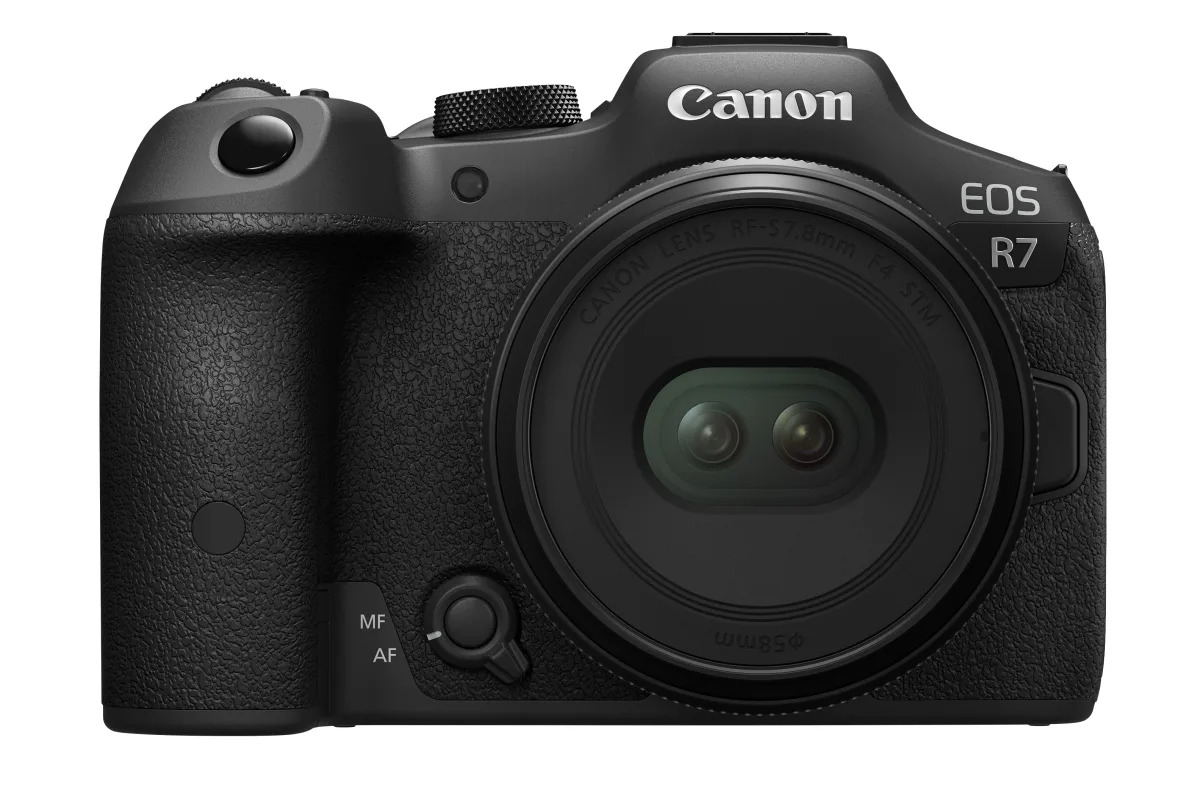
Canon has officially revealed its cheapest spatial and smallest VR lens yet, the $450 RF-S7.8mm F4 STM Dual. It’s the same size as a regular camera lens but is designed to let creators shoot 3D VR content for headsets like the Meta Quest 3 or Apple Vision Pro. In fact, it was first teased in June at WWDC 2024 alongside Apple’s latest Vision Pro OS.
There is one catch, in that the lens is designed for APS-C (not full-frame cameras) and only works with Canon’s 32.5-megapixel (MP) EOS R7 for now. That camera costs $1,300 for the body only, so a full shooting solution is around $1,750.
The company has dabbled with stereoscopic VR lenses before, most recently with the RF5.2mm F2.8 L Dual Fisheye. However, that product is bigger and more unwieldy, much more expensive at $2,000 and only supports manual focus. Its main benefit is the nearly 180 degree field of view that’s close to human vision and enhanced 3D thanks to the wide 2.36-inch gap between the elements.
In comparison, the new 7.8mm crop sensor lens has a much narrower 63-degree field of view. The fact that the the two elements are so close together (.46 inches) also reduces the 3D effect, particularly when you’re farther from the subject (for the best results, you need to be around 6 to 20 inches away, which isn’t ideal for content creators). Autofocus support is a big benefit, though, and it also comes with a button and control wheel that allows separate manual focus for the left and right sides.
Photos and video captured with the EOS R7 and new lens must be processed using Canon’s EOS VR Utility app or a plugin for Adobe’s Premiere Pro, both paid apps. After that, they can be viewed on the Meta Quest 3, Vision Pro and other headsets in a variety of formats including 180-degree 3D VR, 3D Theater and spatial video. The RF-S7.8mm F4 STM Dual lens is now on pre-order for $449 and will arrive sometime in November.
Technology
AMD reports record revenue but Q4 forecast disappoints

Join our daily and weekly newsletters for the latest updates and exclusive content on industry-leading AI coverage. Learn More
Advanced Micro Devices reported record revenue of $6.8 billion for the third fiscal quarter, up 18% from a year ago. But the shares fell due to a disappointing forecast for the fourth quarter.
AMD saw record data center segment revenue of $3.5 billion in the quarter, up 122% from a year ago. It was driven by record Epyc CPU and Instinct GPU revenues.
Client revenue in the quarter was $1.9 billion, up 29% from a year ago. That was driven by strong demand for Zen 5 Ryzen processors.
The weak part was the gaming segment, which saw revenue of $462 million, down 69% from a year ago due to lower semi-custom revenue. That revenue mainly comes from sales from game console revenues.
Embedded segment revenue of $927 million, down 25% from a year ago as customers continued to normalize inventory levels. Non-GAAP gross margins were 54%, up 3 percentage points from a year ago thanks to success in the data center. Net income was $1.5 billion, up 33%.
AMD estimated Q4 revenue will be $7.5 billion, plus or minus $300 million. It cited supply chain constraints hurting the overall ability to meet demand.
“We delivered strong third quarter financial results with record revenue led by higher sales of EPYC and Instinct data center products and robust demand for our Ryzen PC processors,” said AMD CEO Lisa Su, in a statement. “Looking forward, we see significant growth opportunities across our data center, client and embedded businesses driven by the insatiable demand for more compute.”
“We are pleased with our execution in the third quarter, delivering strong year-over-year expansion in gross margin and earnings per share,” said AMD CFO Jean Hu, in a statement. “We are on-track to deliver record annual revenue for 2024 based on significant growth in our Data Center and Client segments.”
If there’s anything to put AMD’s success in perspective, it’s only to look over at its rival Intel to see how tough a time it is having now.
Source link
Technology
Once-dominant Swiggy seeks $11.3B value at IPO, less than half Zomato’s worth
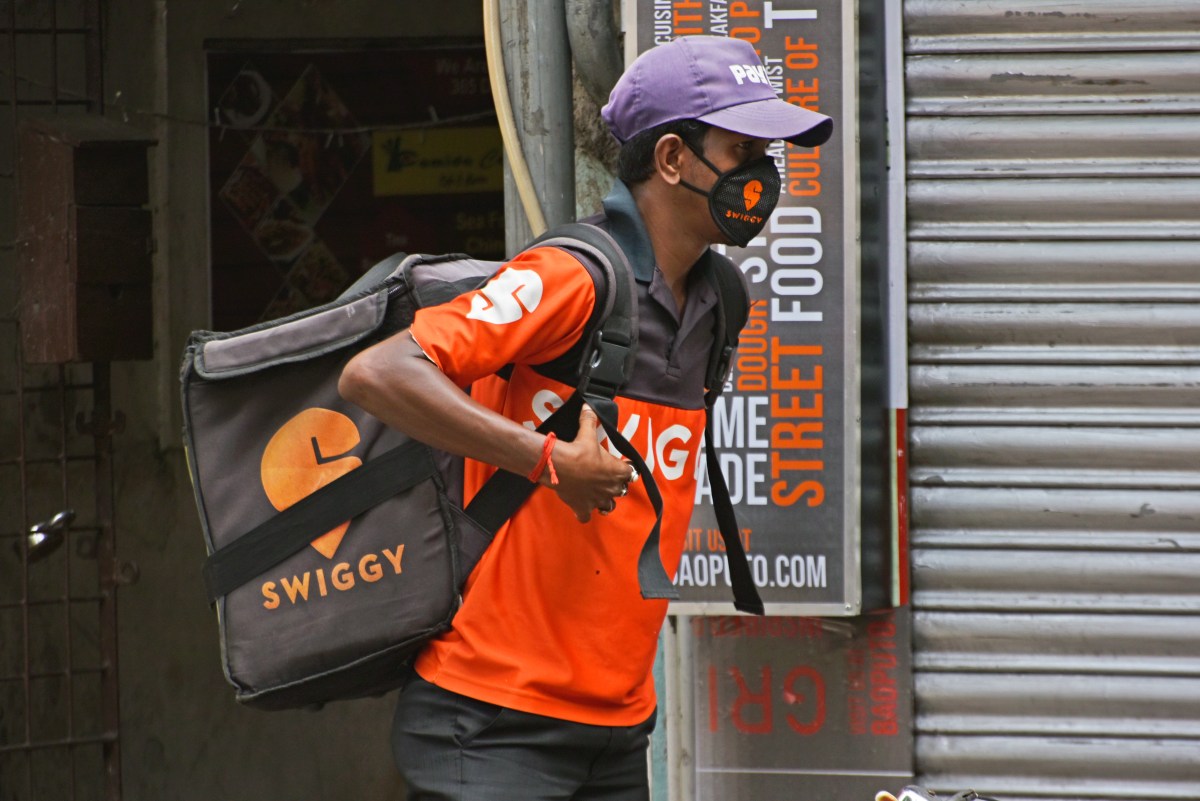
Swiggy, one of India’s largest food delivery and quick commerce startups, is seeking a valuation of up to $11.3 billion in its initial public offering, marking a 57% discount to rival Zomato’s market cap.
The lossmaking Bengaluru-based company has set an IPO price band of ₹371 to ₹390 ($4.41-$4.64) per share for next month’s IPO. At the upper end, the valuation would represent only a modest premium to its $10.7 billion private market value from early 2022 — falling short of recent valuations by mutual fund investors Invesco and Baron.
Swiggy aims to raise $1.34 billion, with $535 million from fresh share issuance and the remainder through existing investor exits. Swiggy, which led India’s food delivery market four years ago and pioneered quick commerce, has since lost significant market share in both segments. In quick commerce, it now ranks third behind Zomato’s BlinkIt and Nexus-backed Zepto.
Zomato, which recently announced plans to raise up to $1 billion through a qualified institutional placement, currently commands a market cap of $26.2 billion.
Technology
Sennheiser’s new wireless clip-on mics can convert to a tabletop microphone

Sennheiser has announced a new portable wireless microphone kit designed to be an affordable and flexible all-in-one solution for content creators and videographers. The Profile Wireless system features a wireless receiver that can be connected to various devices, a pair of compact clip-on transmitters with built-in microphones that can also be used as handheld or tabletop mics, and a mobile charger.
The Sennheiser Profile Wireless kit isn’t expected to start shipping until late 2024 or early 2025, but it’s available for preorder starting today for $299. That’s cheaper than both the popular $349 DJI Mic 2 kit, which includes similar hardware, and the Shure MoveMic system, which is $499 when bundled with a wireless receiver. Rode’s Wireless Go II kit is also $299, but it doesn’t include an on-the-go charging solution.
The Profile Wireless microphones are similar in size to the DJI Mic 2’s and can be attached to clothing using either a clip on the back or a magnet, which allows for more freedom with placement. If you want to use a higher-quality microphone or need a more discreet lav mic, the transmitter includes a lockable 3.5mm connector for attaching external mics.
The microphones come pre-paired to a two-channel receiver and communicate over a 2.4GHz wireless signal that has a range of just over 800 feet with a clear line of sight. If anybody gets in between the receiver and mic, the range drops to around 490 feet. Sennheiser says the battery life for the mics and wireless receiver is around seven hours, but all three can be recharged while away from a power outlet using the included charging bar that is equipped with a 2,000mAh battery.
Each microphone has 16GB of built-in storage with an optional “Backup Recording Mode” that will automatically start recording locally if the connection to the wireless receiver becomes unreliable. There’s also a “Safety Channel Mode” that will record a second copy of the audio at a lower level to help prevent louder sounds from being clipped or distorted.
Since the Profile Wireless system doesn’t use Bluetooth, capturing audio to another device requires the receiver to be connected using an included USB-C or Lightning adapter for mobile devices, a USB-C cable for computers, or an audio cable for cameras. The receiver itself includes an OLED screen that displays information like audio levels and the charge level of the mics; thanks to an included gyro sensor, the screen will automatically flip 180 degrees as needed.
Although wireless mic systems like this are becoming more popular because of their ease of use and convenient size, using a tiny clip-on mic in hand to conduct an impromptu interview can sometimes be challenging. Sennheiser’s solution to that problem has you attaching one of the microphones to the end of the included charging bar and then adding a foam windscreen.
This results in a larger microphone that’s easier to hold or use on a desk when connected to a microphone support or a tiny tripod. The larger microphone’s shape is a bit odd and may result in an extra question or two when sticking it in someone’s face, but it does bring some extra flexibility to an affordable microphone kit that already offers a lot of functionality.
-

 Science & Environment1 month ago
Science & Environment1 month agoHow to unsnarl a tangle of threads, according to physics
-

 Technology1 month ago
Technology1 month agoIs sharing your smartphone PIN part of a healthy relationship?
-

 Science & Environment1 month ago
Science & Environment1 month agoHyperelastic gel is one of the stretchiest materials known to science
-

 Science & Environment1 month ago
Science & Environment1 month ago‘Running of the bulls’ festival crowds move like charged particles
-

 Technology1 month ago
Technology1 month agoWould-be reality TV contestants ‘not looking real’
-

 Science & Environment1 month ago
Science & Environment1 month agoMaxwell’s demon charges quantum batteries inside of a quantum computer
-

 Science & Environment1 month ago
Science & Environment1 month agoX-rays reveal half-billion-year-old insect ancestor
-
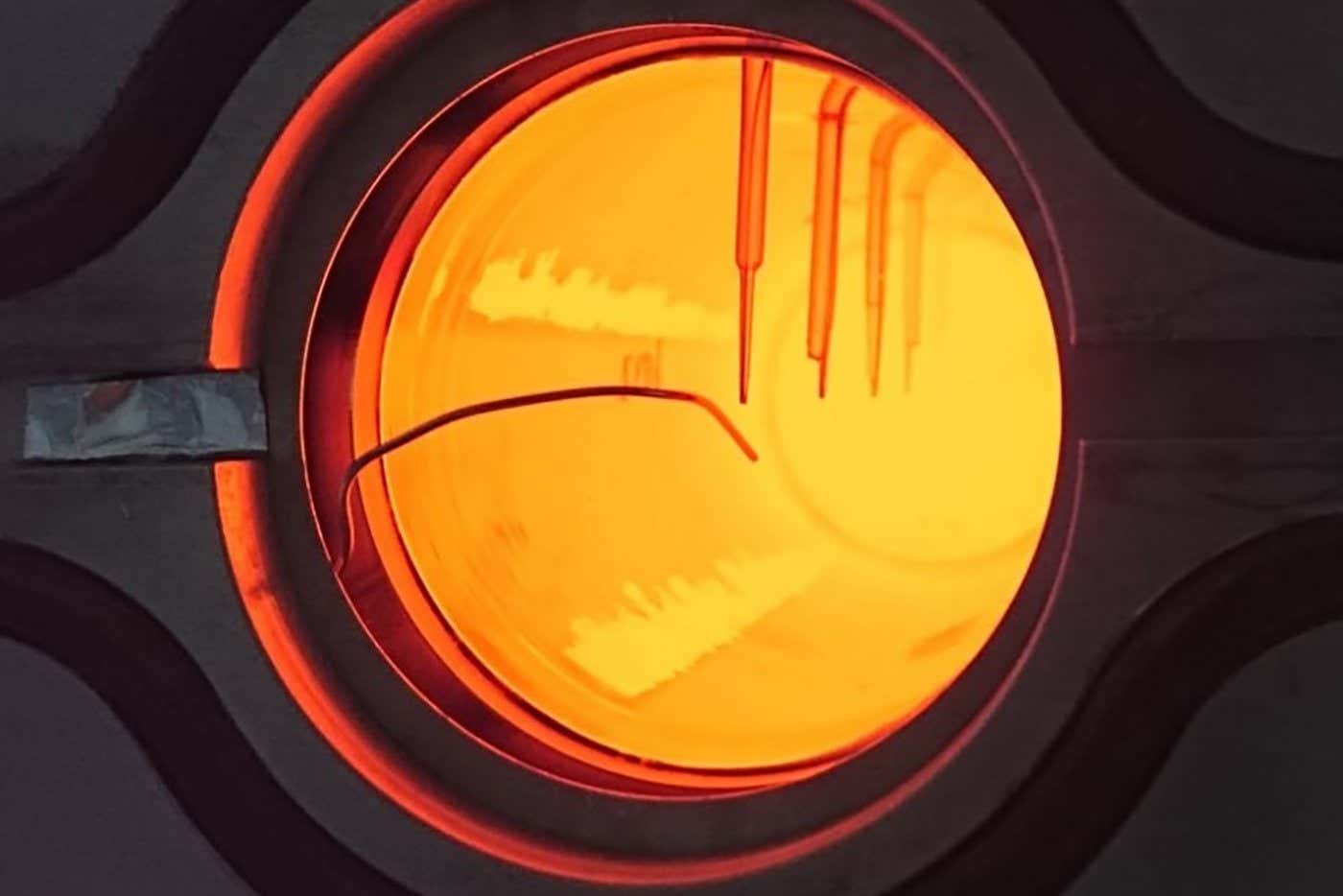
 Science & Environment1 month ago
Science & Environment1 month agoSunlight-trapping device can generate temperatures over 1000°C
-

 Technology4 weeks ago
Technology4 weeks agoUkraine is using AI to manage the removal of Russian landmines
-

 Sport4 weeks ago
Sport4 weeks agoBoxing: World champion Nick Ball set for Liverpool homecoming against Ronny Rios
-
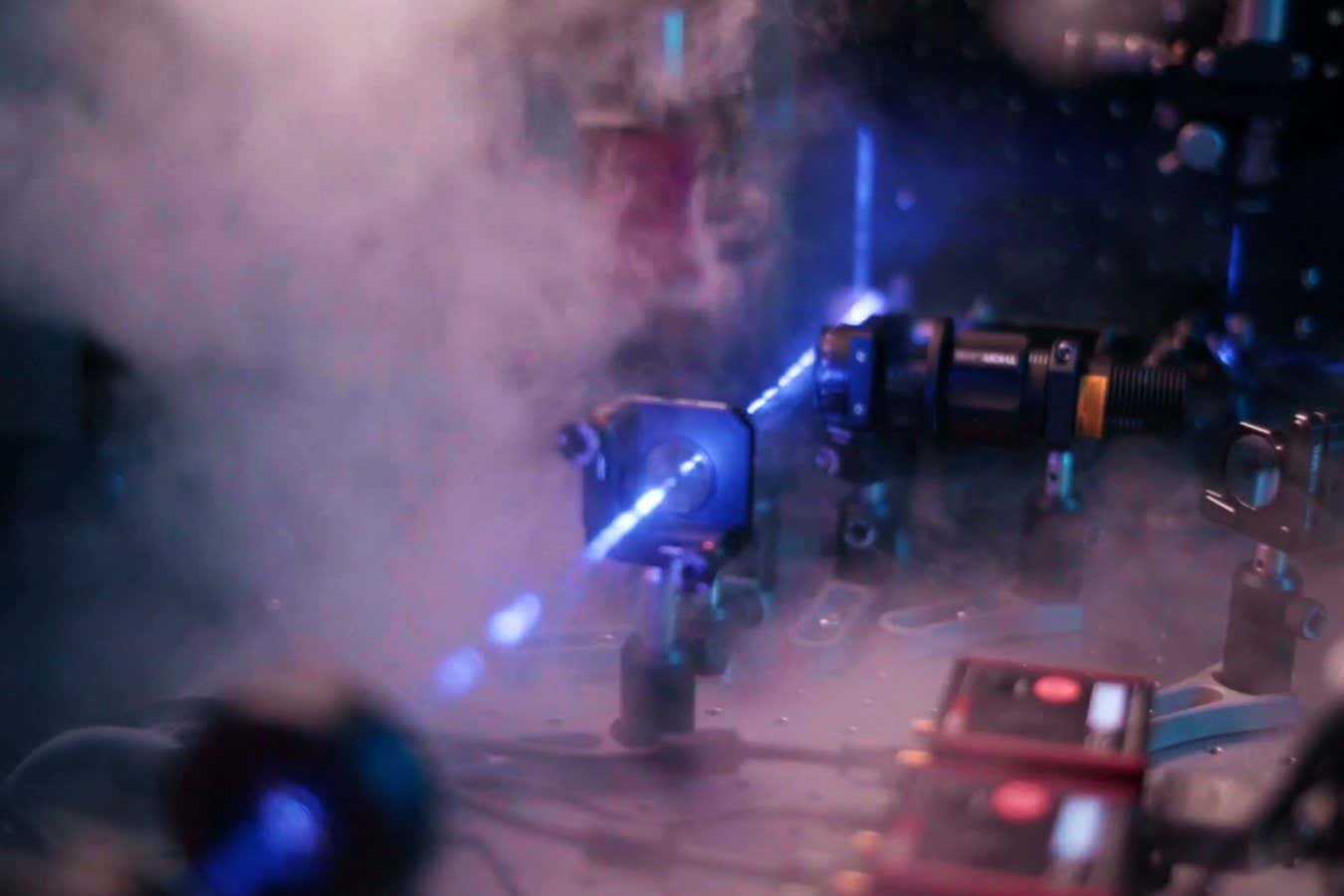
 Science & Environment1 month ago
Science & Environment1 month agoLiquid crystals could improve quantum communication devices
-

 Technology4 weeks ago
Technology4 weeks agoGmail gets redesigned summary cards with more data & features
-

 Technology4 weeks ago
Technology4 weeks agoSamsung Passkeys will work with Samsung’s smart home devices
-

 Football4 weeks ago
Football4 weeks agoRangers & Celtic ready for first SWPL derby showdown
-

 Science & Environment1 month ago
Science & Environment1 month agoPhysicists have worked out how to melt any material
-

 Science & Environment1 month ago
Science & Environment1 month agoQuantum ‘supersolid’ matter stirred using magnets
-

 Science & Environment1 month ago
Science & Environment1 month agoLaser helps turn an electron into a coil of mass and charge
-

 Technology1 month ago
Technology1 month agoRussia is building ground-based kamikaze robots out of old hoverboards
-

 TV4 weeks ago
TV4 weeks agoসারাদেশে দিনব্যাপী বৃষ্টির পূর্বাভাস; সমুদ্রবন্দরে ৩ নম্বর সংকেত | Weather Today | Jamuna TV
-

 MMA4 weeks ago
MMA4 weeks agoDana White’s Contender Series 74 recap, analysis, winner grades
-

 Science & Environment1 month ago
Science & Environment1 month agoA new kind of experiment at the Large Hadron Collider could unravel quantum reality
-

 News4 weeks ago
News4 weeks ago‘Blacks for Trump’ and Pennsylvania progressives play for undecided voters
-

 News4 weeks ago
News4 weeks agoMassive blasts in Beirut after renewed Israeli air strikes
-

 Sport4 weeks ago
Sport4 weeks agoAaron Ramsdale: Southampton goalkeeper left Arsenal for more game time
-

 News4 weeks ago
News4 weeks ago▶ Hamas Spent $1B on Tunnels Instead of Investing in a Future for Gaza’s People
-

 MMA3 weeks ago
MMA3 weeks ago‘Uncrowned queen’ Kayla Harrison tastes blood, wants UFC title run
-

 Technology4 weeks ago
Technology4 weeks agoEpic Games CEO Tim Sweeney renews blast at ‘gatekeeper’ platform owners
-

 MMA4 weeks ago
MMA4 weeks agoPereira vs. Rountree prediction: Champ chases legend status
-

 News3 weeks ago
News3 weeks agoNavigating the News Void: Opportunities for Revitalization
-

 Technology1 month ago
Technology1 month agoWhy Machines Learn: A clever primer makes sense of what makes AI possible
-

 Science & Environment1 month ago
Science & Environment1 month agoWhy this is a golden age for life to thrive across the universe
-

 Football4 weeks ago
Football4 weeks agoWhy does Prince William support Aston Villa?
-

 Technology4 weeks ago
Technology4 weeks agoMusk faces SEC questions over X takeover
-

 News4 weeks ago
News4 weeks agoWoman who died of cancer ‘was misdiagnosed on phone call with GP’
-

 Business4 weeks ago
Business4 weeks agoWhen to tip and when not to tip
-

 Technology1 month ago
Technology1 month agoMicrophone made of atom-thick graphene could be used in smartphones
-

 News4 weeks ago
News4 weeks agoRwanda restricts funeral sizes following outbreak
-

 Sport4 weeks ago
Sport4 weeks agoWales fall to second loss of WXV against Italy
-

 Science & Environment1 month ago
Science & Environment1 month agoITER: Is the world’s biggest fusion experiment dead after new delay to 2035?
-

 Womens Workouts1 month ago
Womens Workouts1 month ago3 Day Full Body Women’s Dumbbell Only Workout
-
Business4 weeks ago
DoJ accuses Donald Trump of ‘private criminal effort’ to overturn 2020 election
-

 News4 weeks ago
News4 weeks agoCornell is about to deport a student over Palestine activism
-

 Technology4 weeks ago
Technology4 weeks agoMicrosoft just dropped Drasi, and it could change how we handle big data
-

 Sport4 weeks ago
Sport4 weeks ago2024 ICC Women’s T20 World Cup: Pakistan beat Sri Lanka
-

 MMA4 weeks ago
MMA4 weeks agoKayla Harrison gets involved in nasty war of words with Julianna Pena and Ketlen Vieira
-

 Technology4 weeks ago
Technology4 weeks agoCheck, Remote, and Gusto discuss the future of work at Disrupt 2024
-

 Money4 weeks ago
Money4 weeks agoWetherspoons issues update on closures – see the full list of five still at risk and 26 gone for good
-

 MMA4 weeks ago
MMA4 weeks ago‘I was fighting on automatic pilot’ at UFC 306
-

 Sport4 weeks ago
Sport4 weeks agoMan City ask for Premier League season to be DELAYED as Pep Guardiola escalates fixture pile-up row
-

 Science & Environment1 month ago
Science & Environment1 month agoQuantum forces used to automatically assemble tiny device
-

 Science & Environment1 month ago
Science & Environment1 month agoA slight curve helps rocks make the biggest splash
-
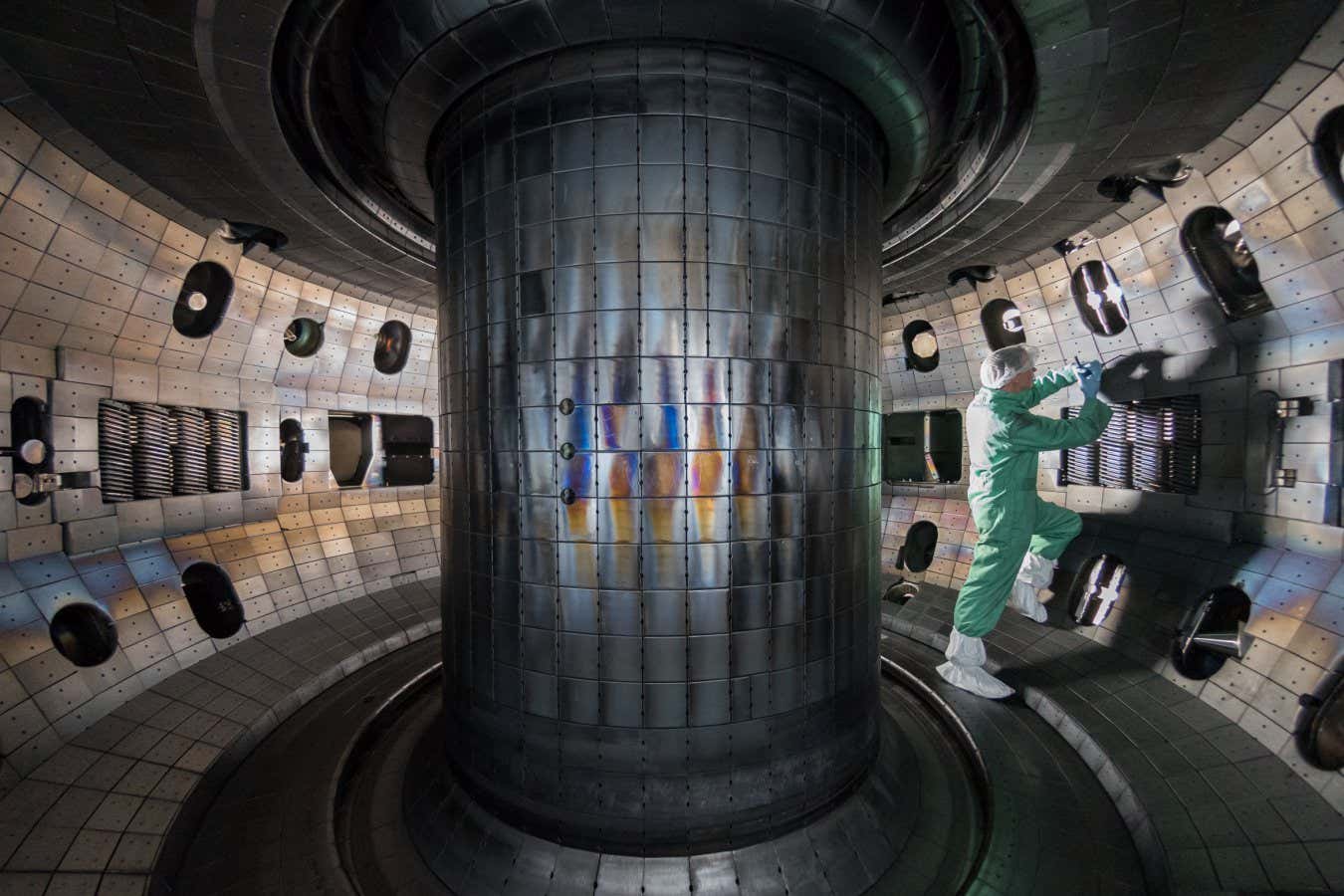
 Science & Environment1 month ago
Science & Environment1 month agoNuclear fusion experiment overcomes two key operating hurdles
-

 News1 month ago
News1 month ago▶️ Hamas in the West Bank: Rising Support and Deadly Attacks You Might Not Know About
-

 Technology1 month ago
Technology1 month agoMeta has a major opportunity to win the AI hardware race
-

 Sport4 weeks ago
Sport4 weeks agoChina Open: Carlos Alcaraz recovers to beat Jannik Sinner in dramatic final
-
Business4 weeks ago
how UniCredit built its Commerzbank stake
-

 News4 weeks ago
News4 weeks agoGerman Car Company Declares Bankruptcy – 200 Employees Lose Their Jobs
-

 Technology4 weeks ago
Technology4 weeks agoTexas is suing TikTok for allegedly violating its new child privacy law
-

 MMA4 weeks ago
MMA4 weeks agoKetlen Vieira vs. Kayla Harrison pick, start time, odds: UFC 307
-

 Sport4 weeks ago
Sport4 weeks agoSturm Graz: How Austrians ended Red Bull’s title dominance
-

 News4 weeks ago
News4 weeks agoHull KR 10-8 Warrington Wolves – Robins reach first Super League Grand Final
-

 Sport4 weeks ago
Sport4 weeks agoPremiership Women’s Rugby: Exeter Chiefs boss unhappy with WXV clash
-

 MMA3 weeks ago
MMA3 weeks ago‘Dirt decision’: Conor McGregor, pros react to Jose Aldo’s razor-thin loss at UFC 307
-

 Sport4 weeks ago
Sport4 weeks agoCoco Gauff stages superb comeback to reach China Open final
-

 Entertainment4 weeks ago
Entertainment4 weeks agoNew documentary explores actor Christopher Reeve’s life and legacy
-

 Science & Environment1 month ago
Science & Environment1 month agoNerve fibres in the brain could generate quantum entanglement
-

 Business1 month ago
Business1 month agoStocks Tumble in Japan After Party’s Election of New Prime Minister
-
Business4 weeks ago
Bank of England warns of ‘future stress’ from hedge fund bets against US Treasuries
-
Business4 weeks ago
Sterling slides after Bailey says BoE could be ‘a bit more aggressive’ on rates
-

 Football4 weeks ago
Football4 weeks ago'Rangers outclassed and outplayed as Hearts stop rot'
-

 Technology4 weeks ago
Technology4 weeks agoOpenAI secured more billions, but there’s still capital left for other startups
-

 News4 weeks ago
News4 weeks agoFamily plans to honor hurricane victim using logs from fallen tree that killed him
-
Business4 weeks ago
The search for Japan’s ‘lost’ art
-

 Technology3 weeks ago
Technology3 weeks agoIf you’ve ever considered smart glasses, this Amazon deal is for you
-

 Technology4 weeks ago
Technology4 weeks agoThis AI video generator can melt, crush, blow up, or turn anything into cake
-

 Technology4 weeks ago
Technology4 weeks agoThe best budget robot vacuums for 2024
-

 Science & Environment1 month ago
Science & Environment1 month agoTime travel sci-fi novel is a rip-roaringly good thought experiment
-

 News1 month ago
News1 month ago▶️ Media Bias: How They Spin Attack on Hezbollah and Ignore the Reality
-

 Science & Environment1 month ago
Science & Environment1 month agoHow to wrap your mind around the real multiverse
-

 Business4 weeks ago
Business4 weeks agoChancellor Rachel Reeves says she needs to raise £20bn. How might she do it?
-

 MMA4 weeks ago
MMA4 weeks agoJulianna Peña trashes Raquel Pennington’s behavior as champ
-

 Business4 weeks ago
Business4 weeks agoWater companies ‘failing to address customers’ concerns’
-
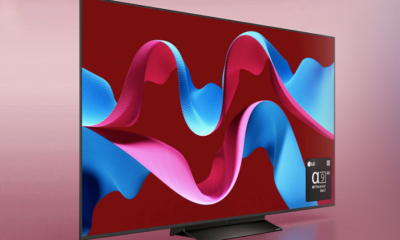
 Technology4 weeks ago
Technology4 weeks agoLG C4 OLED smart TVs hit record-low prices ahead of Prime Day
-

 Technology4 weeks ago
Technology4 weeks agoThe best shows on Max (formerly HBO Max) right now
-

 Sport3 weeks ago
Sport3 weeks agoWXV1: Canada 21-8 Ireland – Hosts make it two wins from two
-

 Sport1 month ago
Sport1 month agoWorld’s sexiest referee Claudia Romani shows off incredible figure in animal print bikini on South Beach
-

 Technology4 weeks ago
Technology4 weeks agoJ.B. Hunt and UP.Labs launch venture lab to build logistics startups
-
Business4 weeks ago
Head of UK Competition Appeal Tribunal to step down after rebuke for serious misconduct
-

 Business4 weeks ago
Business4 weeks agoStark difference in UK and Ireland’s budgets
-

 Money4 weeks ago
Money4 weeks agoPub selling Britain’s ‘CHEAPEST’ pints for just £2.60 – but you’ll have to follow super-strict rules to get in
-

 Technology4 weeks ago
Technology4 weeks agoSingleStore’s BryteFlow acquisition targets data integration
-

 Technology4 weeks ago
Technology4 weeks agoApple iPhone 16 Plus vs Samsung Galaxy S24+
-
Politics4 weeks ago
Rosie Duffield’s savage departure raises difficult questions for Keir Starmer. He’d be foolish to ignore them | Gaby Hinsliff
-

 Health & fitness4 weeks ago
Health & fitness4 weeks agoNHS surgeon who couldn’t find his scalpel cut patient’s chest open with the penknife he used to slice up his lunch
-

 MMA4 weeks ago
MMA4 weeks agoPereira vs. Rountree preview show live stream
-

 Football4 weeks ago
Football4 weeks agoSimo Valakari: New St Johnstone boss says Scotland special in his heart
-
Business4 weeks ago
Top shale boss says US ‘unusually vulnerable’ to Middle East oil shock
-

 News4 weeks ago
News4 weeks agoSpongerla Rayner’s gift gluttony is worse than Free Gear Keir’s – her freeloading has destroyed working class reputation
-

 MMA4 weeks ago
MMA4 weeks agoUFC 307 preview show: Will Alex Pereira’s wild ride continue, or does Khalil Rountree shock the world?
-
Business4 weeks ago
Champagne days for F1


You must be logged in to post a comment Login